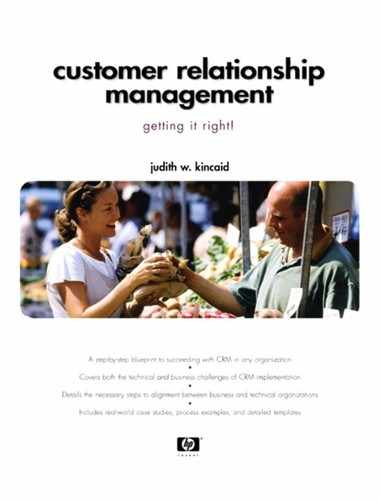| assets
| Everything a company owns that has significant value and can be sold to pay off debts.
| 20
|
| brand
| A pact between the company and its customers that makes promises, sets expectations, and defines agreements for their mutual benefit, which is symbolized by the “seal”.
| 2
|
| customer
| A person (or group of persons) who influences or decides on the acquisition of one of your products or services or who uses one of these products or services.
| 1
|
| customer company
| An organization (public, private, non-profit, or governmental) that has characteristics which influence the group of people who work there.
| 1
|
| customer lifecycle
| The total time that the customer is engaged with your company from the customer's experience and viewpoint.
| 3
|
| customer loyalty
| A behavior, built on positive experiences and value, that causes a customer to buy our products, even when that may not appear to be the most rational decision.
| 1
|
| customer relationship management (CRM)
| The strategic use of information, processes, technology, and people to manage the customer's relationship with your company (marketing, sales, service, and support) across the whole customer life cycle.
| 3
|
| customer segments
| Groups of customers who look like one. You want to treat all group members the same, and all groups differently from other groups.
| 16
|
| customer-centered company
| A company that has an external point of view, making plans and decisions based on the anticipated impact on the customer.
| 2
|
| data classes
| High-level categories of stuff that is important to YOUR business.
| 10
|
| data subjects
| The stuff (people, places, things, or ideas) that is important to YOUR business and about which you need to collect, store, and share certain facts.
| 10
|
| entities
| The people, places, things, and ideas that are important to YOUR business. Entities have characteristics (attributes) that the business needs to collect, store, and share, and they have links (relationships) to other entities.
| 10
|
| information component
| Data in context.
| 10
|
| people component
| Changes in the way people function or operate.
| 13
|
| process component
| A series of work steps that lead to a specific result.
| 11
|
| product-centered company
| A company that makes plans and decisions based on an internal perspective (the impact inside the company).
| 2
|
| program
| The sum of all the work your company does to improve the customer experience and increase loyalty. Your program can be as long or short as appropriate to your business needs.
| 5
|
| project
| A well-defined effort with specific deliverables, due dates, and costs. To ensure success, a project must produce valuable and measurable results but must be small enough to complete within a business sponsor's attention span.
| 5
|
| technology component
| The computer tools (hardware, software, and networks) employed to manage the information and processes you use to deliver customer experiences.
| 12
|
| touch points
| The means (media) that you use to interact with your customers. Touch point interactions must be targeted to a specific customer or customer company, and they must allow for a response (a conversation, a transaction, a reply, and so on).
| 3
|
